QuestionQUESTION: hi, i have a leo, he's about 8 or 9 months old. long story short, he was healthy and hardy for his first 6 six months and then he got a bacterial infection (from the crickets we guessed). ever since then he's been hard to read. i think i might be hypersensitive to him since our first leo recently died and i worry maybe i waited too long before getting her treatment. but ever since we finished his round of fortaz (back in april) he's been impossible to get on a feeding schedule. he won't eat crickets anymore, won't eat mealworms, he was eating butterworms, but now will only eat wax worms (which i know isn't' good for him). but i wonder if maybe he's just transitioning from juvenile to adult. before he got sick he ate every night and ate at least 5 crickets and however many meals worm during the night. but now i have to catch him in the right mood and he only eats 2 or 3 worms. i can't really tell is he's losing weight but his color has gone mucky. almost green where as he used to be bright yellow and orange. we moved him to a larger tank and he now has access to a ton of temperatures, heights, hides, and moisture levels, but he simply sleeps in his hot cave during the day and paws at the glass at night. what are we doing wrong?
ANSWER: Hi Ann,
I'm sorry to hear you lost your first leo.I'm going to include a basic care sheet that I wrote to help ppl out with care. You don't say when you moved him to a new cage but they do hate changes and can take a while to adjust to anything new. Double check your temperatures, etc and make any needed changes. A few things pop into my mind as to his not eating. One, he has gotten VERY spoiled on the wax worms. They don't call them "LIZARD CANDY" for nothing!!. IF your leo has a nice fat tail, then don't be afraid to let him go for a few days without even offering him any food. Most leos only want to eat every other day as adults but it sounds like yours is going much longer.
My other thought is that because of taking an antibiotic, his needed gut bacteria has been depleted. They need to have active gut bacteria to be able to digest their foods. To replace the bacteria and get the gut working well again, pro biotics are used. To replenish the needed gut bacteria you can use one of the following products.. bene bac...labeled for birds, approved for reptiles. nutri bac acidolophliz+ or plain, human grade Acidophilus...... one capsule will dose for at least 2 days. most often 3-4 days of treatment is recommended but there is no problem with giving for a longer period of time on any of the products. They can also be given on a regular basis 2-3 times a week. BeneBac ..most larger pet stores should carry it...especially if they have birds... Acidophiliz+ I think Pets Mart carries it..if not....on line at www.reptilesupply.com
The dull color....has he ever shed yet? When they are ready to shed, the skin that is "dead" and loosening will look dull then go basically white. Read about the need for a moist hide in the care sheet. It is normal for them to sleep all day and become active in the evening as they are nocturnal. Do you offer his insects in the evening?
If he sees you at night (when he is pawing at the glass) have you ever tried offering food then or even taking him out of his tank? Is his tank a 20 gallon or larger? If he continues to act as he is, even after any needed changes or pro biotics, then I would get him back to the vet.
BASIC CARE FOR A LEOPARD GECKO
Leopards are pretty easy to care for but they do need
special care. Here are some of the basic needs of your gecko.
HOUSING: The need to have at least a 20 gallon long tank for one Leo. This needs to have a secure fitting screen top...they can be quite the escape artists!!! They need to have a humid hide box.You can make this with something as simple as a small plastic dish with a hole cut in one side and a small mesh bag filled with some Sphagnum moss coconut bark or Peat moss that you mist.
I made mine out of the small plastic Folgers coffee containers...I cut an opening in the lid..and put the moss in..they LOVE it. I use the terrarium moss in mine.
I use that on the warm side of the tank. Be sure to provide a cool hide box on the other end. I also provide a mid temperature hide...which is in the middle of the tank.I use the critter caves which you can purchase. NOT the ones that have heat in them!!!!
Provide secure climbing areas for your gecko. Fake plants, rocks and branches are all fine to use. be sure there are no wires or sharp ends to any fake plants you use.
*****SUBSTRATE:(that's the stuff on the floor of your tank) Newspaper, lizard carpet or paper towels work great and are easy to clean and are much safer than any loose substrate. Sand or other loose substrate is not recommended as that they can be deadly to the leo when it is ingested(eaten, even by accident while eating their insects)...A very graphic site of an impacted leo surg can be seen at http://homepage.mac.com/exoticdvm/reptile/PhotoAlbum181.html it is very graphic!!! ******What I have found that works great for safety and heat distribution is using about 1/4 inch of children's play sand(since the tiles fit tight together, there is no sand danger) on the bottom of the tank and on top that you place ceramic or slate floor tile. What is nice is that the 12 x 12 squares fit perfect in a 20 gallon tank with no spaces between the tiles. The sand and the tile distribute the heat wonderfully. Using the under tank heater as described is what distributes the heat. Also, overhead heat will help in heating the tiles...I've been using this set up for several years and the leos love it. Using a tile that isn't smooth is recommended. **********
TEMPERATURES: They need a warm area ( on the floor) of 88-92 degrees and a
cooler area in the upper 70s, low 80s. At night their temperature can drop to the low to mid 70's.
Never use a hot rock for a leopard gecko...or any reptile.
They can severely burn any reptile. You can use a heating
pad under the tank,under tank heater for the warm area. You can use a regular household light bulb in a dome fixture with a ceramic socket in it to keep the warm area at the 88-92 degree area if needed there, otherwise, placing the light bulb about midway in the tank will give the needed temperatures throughout the tank. You may have to play with the wattage of the bulb but generally 40-60 watts is sufficient.At night, no white light. If room temperatures stay above 70 degrees, no extra night heat is needed. The under tank heater or heating pad should cover about 1/3 of the tank....be sure to raise the tank up about 1/4-1/2 inch off the stand when using an under tank heat source to prevent heat build up which can cause the glass to break and hot spots in the glass. Be sure to have a good layer of newspaper, carpeting or, even a thin flat rock(such as tile) on top the area that the under tank heat source is placed...if you use a thin rock or tile, it helps to distribute the heat very well.
You can use the special nighttime lights that are designed for reptiles. I like using a ceramic heat emitter on a thermostat for nighttime heat.
DO NOT use black lights or party lights as they can cause eye damage!!!!
The wattage you use will vary based on room temperature and size of tank.
LIGHTING: Leopard geckos do not need UVB lighting but it does not hurt them to give them uvb. They should have some type of light during the day, be it a uvb tube, regular florescent light, reptile day light or regular household light bulb. NO white lights at night!!!
FEEDING: Geckos should not be fed crickets or other insects that are bigger than the space between their eyes. Generally, hatchlings can be fed more than once a day,juvys can be fed twice a day, adults are fed once daily or every other day, in the early evening. Crickets and other food items such as silk worms, super, and an occasional treat of a wax worm, need to be dusted with a calcium supplement two times a week and also they should have a small dish of calcium in their tank. I use the lid of a milk jug for the little dish of calcium in their tank. For dusting the insects, Use a calcium with no added phosphorus. Insects must be gut loaded(fed) for at least 48 hours prior to feeding your gecko. Remove any uneaten crix or superworms after 15-20 minutes..... Place a piece of cut potato in the tank so that if you have missed any uneaten insects, they will eat the potato instead of nibbling on your gecko!!!
*************You have to be sure to feed your crickets and insects the right foods before feeding them to your gecko. If your crickets/insects are not healthy and well fed, your gecko will not get the nutrition he needs. You can gut load your crickets and insects greens, veggies, cereals or specially designed commercial foods for crickets or the insects you are feeding. ************
Be sure to have a small dish of clean water for your gecko at all times!!
You can offer them some baby food or fruits on occasion ...
Mine will even eat a small piece of watermelon now and then.WATER: always provide a dish of drinking water. If you choose to mist your gecko to drink, its best to not get the tank too wet as that they do not do well with higher humidity. Sometimes its better to take your leo out of their tank to mist them to get them to drink!!!
HANDLING: Some geckos enjoy being held...others prefer not to be handled at all. Be sure to be very gentle when holding your leo and NEVER grab them by the tail! Their tails are extremely fragile and will break.
I do suggest finding a vet that can treat reptiles BEFORE you actually need one!!! To find a vet that is able to care for reptiles:
http://www.herpvetconnection.com
http://www.arav.org/ECOMARAV/timssnet/amm/tnt_mdsearch.cfm
http://www.anapsid.org/vets/
For more information on leopard geckos:
http://www.drgecko.com
If you have any questions or don't understand something, please let me know.
---------- FOLLOW-UP ----------
QUESTION: Thanks for getting back so fast. We moved him about a month ago and my sons father got over zealous. Rather than getting a 20 long he purchased this massive tank. Probably 50 gallons. So i've been spending the last four weeks tying to keep the warm side up without making it too hot on the cool side. with him still recovering i'm on edge to begin with. The pawing at the glass is concerning. Before he got sick he always wanted out. We'd put our hand in just to changethe water and he would crawl up our arms. Now he paws until he sees us and then goes back in his cave. And when we reach in he side steps us. Almost never wants to come out. I just worry there is something the vet missedwith our past leo and he still has it. She basically starved to death despite 3 hand feeding a day. She kept losing weight. Refused to eat. Got her on the fortaz, she ate but wasn't digesting it. That is she had zero stools to speak of. It was all water and mealworm shell. But they did a stool check when they took a blood sample and did a crypto test and she came back negative for everything right before she died. She was a year old and weighed 14 grams. But i'll try the benebac with him too. Maybe it will help.
But something i forgot to ask which is what has me on high alert, last week he pooped a butterworm colored stool. From the time i noticed it, went to get a tissue and came back to clean it out, it had dissapeared. I didn't even see him out and about but apparently he wasn't done with it. How sick can he get from eating his own stool or do you think it was an attempt to redigest it because of the absent intestinal bacteria?
Your care sheet is great by he way. Thanks.
AnswerHi Ann,
I would get a piece of plexi glass and make the tank smaller to help with heating issues. That could be part of his problem with not eating. Also, if you don't have an under tank heater, I suggest getting one.
Your other one was very small for her age, that is for sure. Sometimes there are genetic problems that no one can help fix...much has to do with people over breeding and just not paying attention to the lines they are breeding. It is very possible that she just didn't have all of her internal digestive system developed correctly which can happen with reptiles the same as it does with humans.
If your leo did indeed eat his "poop" that is something he may be doing to get the needed gut bacteria so hopefully the pro biotics helps. He shouldn't get sick from eating it. Many reptiles do that and in fact, the first meal of hatchling iguanas is fresh poop from an adult iguana to give their gut bacteria a kick start.
You might want to see if your leo will take water from an eye dropper or even lick at a piece of water melon to make sure that dehydration isn't an issue.
Glad you like the care sheet!!

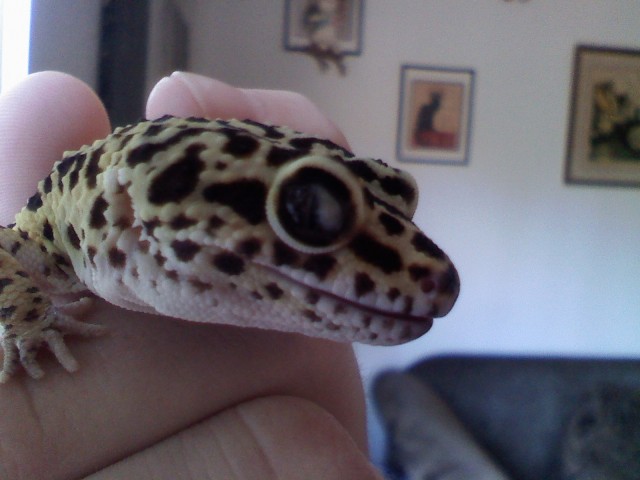 My leopard Gecko Im afraid has skin from shedding stuck in its eye
Question
Yoshis eye
My leopard Gecko Yoshi was fine yes
My leopard Gecko Im afraid has skin from shedding stuck in its eye
Question
Yoshis eye
My leopard Gecko Yoshi was fine yes
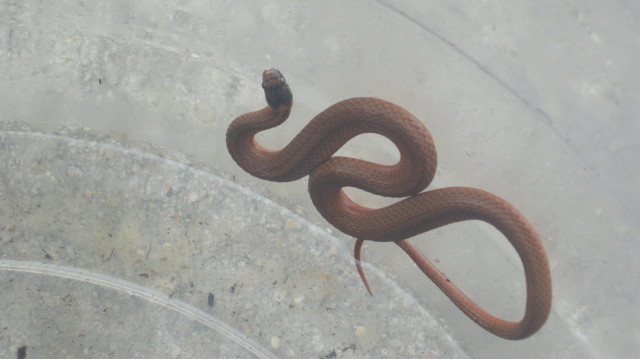 Can you identify this snake?
Question
Snake
Yesterday we found 2 snake sin our pool,
Can you identify this snake?
Question
Snake
Yesterday we found 2 snake sin our pool,
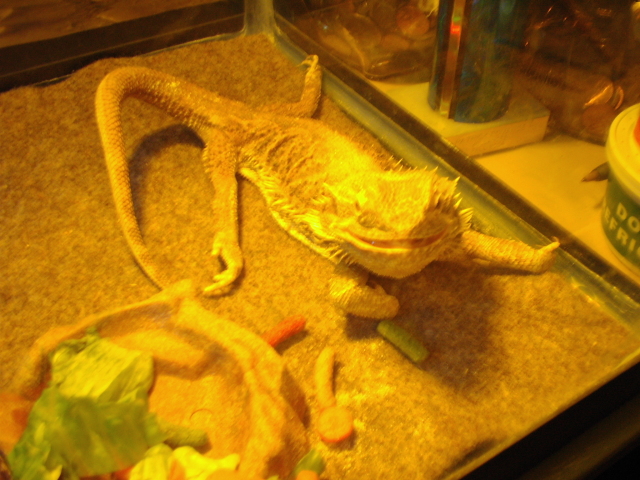 mbd
QuestionQUESTION: my sons bearded dragon is about 5 yea
mbd
QuestionQUESTION: my sons bearded dragon is about 5 yea
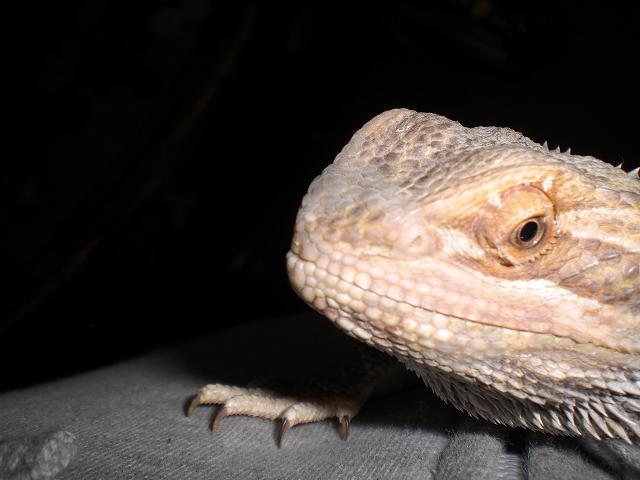 spots
Question
my dragon
In the past week my bread dragon has
spots
Question
my dragon
In the past week my bread dragon has
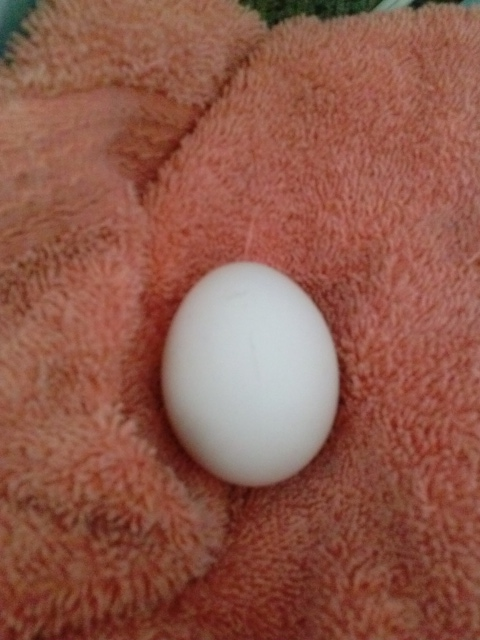 Found egg
Question
Found egg
I found an egg in my bushes a
Found egg
Question
Found egg
I found an egg in my bushes a